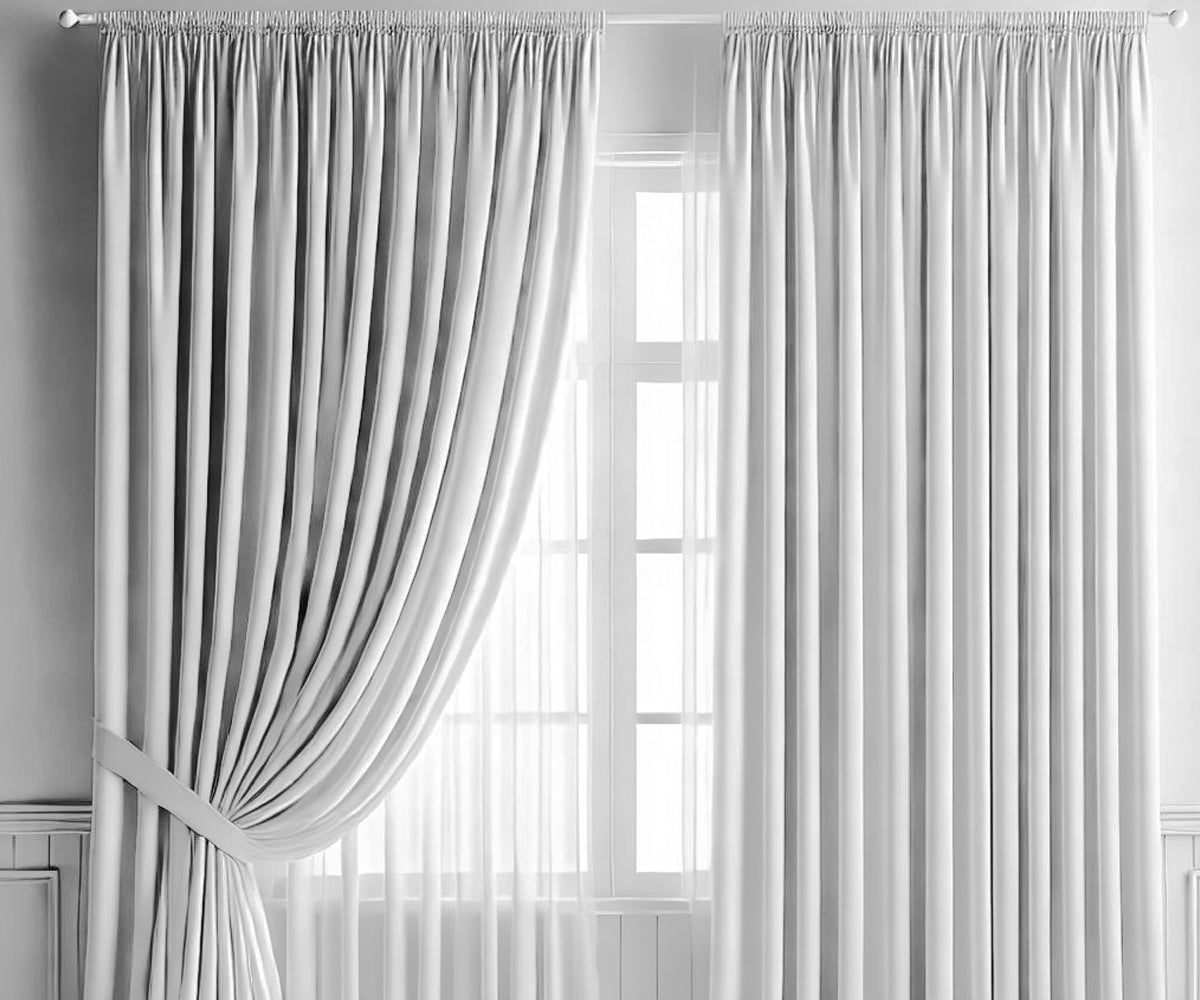1. What Are Window Treatments?
Window treatments include curtains, blinds, shades, and drapes, which are used to control light, privacy, and aesthetics in a home. Cotton curtains stand out as a natural and breathable option, making them ideal for both modern and traditional interiors.
2. Why Cotton Curtains Are the Best Sustainable Choice
A. Made from Natural and Renewable Materials
Unlike synthetic fabrics, cotton curtains are made from 100% natural fibers, which are biodegradable and renewable. Thus, they are a sustainable alternative to plastic-based window treatments for sliding glass doors and synthetic drapes.
B. Energy-Efficient and Breathable
Cotton fabric allows better airflow, keeping rooms cooler in summer and warmer in winter. This helps reduce energy consumption, making them great for patio door window treatments where insulation is needed.
C. Free from Harmful Chemicals

Many synthetic window treatments are treated with chemicals for durability, but white cotton curtains are naturally soft and chemical-free. This makes them perfect for bathroom window treatments where air circulation is essential.
Also Read: How to Choose Curtains for Living Room?
3. Best Places to Use Cotton Curtains as Window Treatments
Cotton curtains can be used in different rooms based on their specific needs:
-
Kitchen Window Treatments - Light and airy cotton curtains help filter natural light while maintaining privacy.
-
Dining Room Window Treatments - A soft, flowy look adds a cozy and elegant touch to your dining area.
-
Bedroom Window Treatments - Cotton curtains in neutral tones create a relaxing and breathable sleeping environment.
-
Living Room Window Treatments - Stylish yet functional, they complement modern and minimalist designs.
-
Patio Door Window Treatments - Cotton curtains provide privacy while still allowing fresh air into your space.
4. How to Choose Window Treatments: Finding the Right Cotton Curtains
When selecting window treatments, consider the following factors:

-
Fabric Weight - Choose lightweight cotton for a breezy feel or heavier cotton for better insulation.
-
Color and Pattern - Neutral tones like white or beige blend well with most decors, while patterned cotton curtains add a decorative touch.
-
Length and Style - Floor-length curtains add elegance, while shorter curtains are ideal for kitchens and bathrooms.
Continue Reading: How to Hang Curtains? A Beginner's Guide
5. Modern Window Treatments: The Rise of Cotton Curtains
Trendy homes in 2025 are all about sustainable choices. So, what window treatments are in style for 2025? Cotton curtains stand out for their simplicity and charm. Their timeless appeal and eco-friendly benefits make them a top choice for the coming years.
6. Where to Buy Window Treatments: Choosing the Right Source
Looking for an eco-conscious way to dress your windows? Choose high-quality cotton curtains from All Cotton and Linen. Our ethically sourced and eco-friendly designs make them a great addition to any home.
7. How to Layer Window Treatments: Combining Cotton Curtains with Other Options
For a stylish and functional look, layering is key. Here’s how you can do it:
-
Sheer Cotton + Blackout Curtains - Use white cotton curtains with blackout layers for light control in bedrooms.
-
Cotton Drapes + Wooden Blinds - A modern look for dining room window treatments or living room window treatments.
-
Linen Cotton Blend + Roman Shades - Perfect for kitchen window treatments to balance natural light and privacy.
8. How to Clean Window Treatments: Caring for Cotton Curtains
One major advantage of cotton curtains is their ease of maintenance. Here’s how to keep them fresh:

-
Regular Dusting - Shake them out or vacuum gently to remove dust.
-
Machine Wash - Wash in cold water with mild detergent to prevent shrinkage.
-
Air Dry - Let them dry naturally to maintain their softness and shape.
Following these steps ensures your window treatments stay fresh and last longer.
You May Also Like: Why Linen Curtains Are Your Must-Have Investment for 2025?
9. How Much Do Window Treatments Cost?
The cost of window treatments depends on the material and customization. While synthetic options may be cheaper upfront, cotton curtains are more durable and a better long-term investment. High-quality white cotton curtains from eco-conscious brands are an affordable and sustainable choice.
Choosing cotton curtains as your primary window treatments is a step toward a more sustainable home. They offer comfort, style, and environmental benefits without compromising on functionality. Whether you need modern window treatments for your living space or practical bathroom window treatments, cotton is a versatile choice.
Switch to sustainable living with eco-friendly window treatments and enjoy a greener home!












